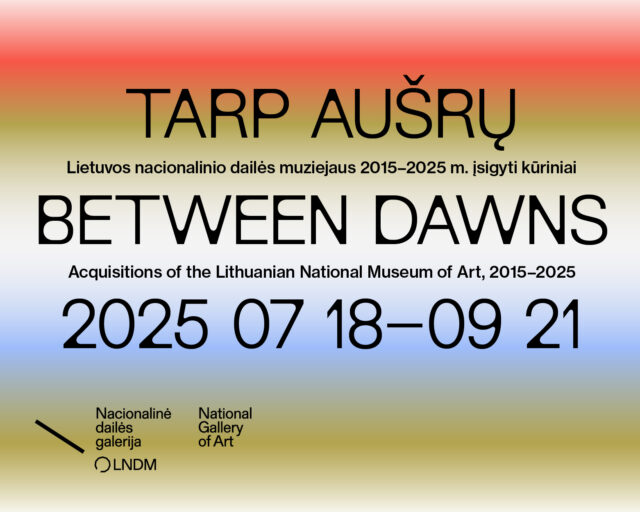
Valentinas Klimašauskas, Theory Of The Plankton, film still, 2016
New technologies have worked their way into every plane of the contemporary art world, from production to dissemination and reception of art; invisible algorithm-driven websites, online exhibitions, ‘post-Internet’ aesthetics, art spectators swiping through artworks on their tablets and smartphones – are all just a few of the many instances of interaction between art and the latest hardware and software technologies. In order to understand this scope, one could look at various big-scale exhibitions such as Cut to Swipe, MoMA 2014/2015, Surround Audience, New Museum Triennial 2015, Private Settings: Art After The Internet in Museum of Modern Art in Warsaw 2014/2015, and most recently in 2016, Painting 2.0: Expression in the Information Age at the Museum Brandhorst. It therefore seems timely and even crucial to speak about the power of digital technologies, their political and social potencies, and the critical horizon they can offer. Following this task, I met up with Alexander R. Galloway, a professor of Media, Culture, and Communication at New York University and a writer working on issues in philosophy, technology, and theories of mediation, so we could discuss digital technologies and their political and artistic implications in the contemporary world, which he has expressed in his latest writing.
Inesa Brasiske: You are a philosopher, a programmer and an artist. How do these activities nourish one another in your work? Would you agree that an academician in the contemporary world should be a creative experimenter, combining theory and praxis rather than simply be invested in purely theoretical debates and academic publishing?
Alexander R. Galloway: Friedrich Kittler said that, in order to be a cultural worker today, one must know at least one natural language and one machine language. We’re seeing many people today in the arts and humanities taking his advice, and expanding their practice into the realm of machines and information. I try to pursue a multi-modal strategy whereby I write about technology while also building it. Thus, while writing and researching my first book on networks (Protocol, 2004), I also produced and launched an Internet art platform called Carnivore that allowed artists and designers to make real-time visualisations of network data. Likewise, when writing on artists and games a few years later, I was simultaneously coding a game. I find this multi-modal strategy to be quite useful because it adds a level of technical insight to what would otherwise be strictly critical or theoretical writing. Although I’m embarrassed to admit that I’ve been neglecting my coding in recent years! This is due to an explosion of interesting developments in the world of theory and philosophy.
Discussing digital technologies politically has never been so urgent. It is enough to think about bots that are actively participating in our everyday life, influencing political reality. You write that interface is a process and an action rather than an object. It is a threshold of interaction between different realities. Do you think there is a point where one can no longer distinguish the digital world from the material world, where interface completely disappears? Could we say it is a dream of the power structures?
Such a dream—the dream of immediacy or concurrence between origin and reproduction—is one of the elemental hypotheses of human culture since time immemorial (typically paired with the opposite condition: absolute disconnection; radical non-communicability). Personally, I’m more drawn to an inspection of the particular, qualitative configuration of the interface than I am to normative evaluations of the interface like is it good, is it bad or is it user-friendly. And this is a configuration that must always be understood in its own social and historical context. So for example, one might define today’s dominant philosophy of the interface as one of “organised promiscuousness,” in which all things must touch each other, but only via specific channels subject to high levels of codification and organisation. Social media is a good example of this kind of organised promiscuousness. (I have always loved how the network adapters in personal computers have their “promiscuous mode” – something that Wendy Chun has written about).
How does the interface affect our desires? Would you say that it produces them or is it merely a mirror?
A fascinating question! At the very least we can say that desire is an interface, and that the questions evoked by desire are, at root, interface questions, to the extent that desire deals with the question of relation. It’s useful, I believe, to look beyond the more common-place assumptions about interfaces as mirrors, screens, doors or windows, and think of them as autonomous zones within which a whole host of complicated phenomena take place. As for desire, perhaps the psychoanalytic answer is the most appropriate. I’m thinking of the two crucial insights that psychoanalysis furnishes on desire. The first great lesson: there’s nothing natural about desire. And the second great lesson: “do not compromise your desire” (Lacan). In other words, desire is something to be created, and once created, desire must then be fulfilled to its full completion. What is the desire called interfacing? Such is the elemental question of thinking.
The computer as a mode of mediation is, for you, an ethic. In your book The Interface Effect (Polity, 2012) you write “As an ethic, the computer takes our action in the world as such as the condition of the world’s expression.” Is this “relationship of command”, which assumes a certain anthropocentrism, still valid when thinking about machines ‘without a human’ (or superseding the human) such as high-frequency trading or spam?
As opposed to time-based media or even image-based formats, computers are action-based media. Hence, we can talk about the “executability” of code, or the way in which a machine can perform a certain set of procedures. The closest analogue in artistic practice—besides the domains of music and theatre, which already share a great deal with computation—would be certain kinds of avant-garde practices, followed later by conceptualism, which substitutes for the work a kind of recipe for action. Vito Acconci’s “pick a stranger and follow him” is like a piece of code that can be executed. So, during the late 1990s, Vuk Cosic described computer artists as “Duchamp’s children”. And he claimed, with typical bravado, that “all art till now has been merely a substitute for the Internet.”
To claim that computation is an “ethic” or “ethos” is not so much to reinforce some sort of human basis. On the contrary, ethos simply refers to a certain kind of practice. (And it’s important to distinguish between an ethos and “the ethical” that is, a moral prescription about proper behaviour. Computers aren’t ethical in that sense). Cybernetics was already successful in divorcing command from anthropocentrism several decades ago. So today, we can safely speak about command in a way that doesn’t reduce it to the human.
To analyse high-frequency trading or spam is to analyse the particular ethos at work in each case. And, in both instances, the ethos will be distinctly non-human, or hyper-human, as you suggest. The action-based ethos of high-frequency trading exists in a purely algorithmic space, exploiting the outer bounds of physical limitations involving speed and space (computational speed, message bandwidth, and geographic distances). Likewise spam is the “negative” offspring of distributed networks, and would not exist without them. The action-based ethos of spam exploits a variety of different things: high levels of connectivity afforded by distributed networks; low per-message transaction costs; social engineering (via phishing); and so on.
In your writings you frequently talk about art. Why is it important for you to think about art practices? What political potentialities, rather than poetic potentialities, do you see in art?
As an adherent of cultural Marxism and particularly the work of Fredric Jameson, I consider it crucial to move beyond purely economic analysis and consider the realm of culture. At one point Jameson even makes the surprising claim that he is not a “political” theorist at all, since that would mean making arguments about power, money and sovereignty and the like, which, of course, he never does. I find this tremendously interesting, even if I don’t always follow it. It reveals an elemental fact, that many political questions are, at root, questions of representation, identity, narrative, figuration and indeed any number of other concepts that are typically classified under the heading of culture or aesthetics. In other words, even if one is interested in politics or economics, it’s often easier to find the answers in art or culture, since that’s where the political or economic realities most vividly appear. How do we understand American fascism, for example? Well it’s in Guantanamo Bay, certainly. But it’s also in the TV show “24” or the film “American Sniper,” which forge the ideological infrastructure necessary for Guantanamo Bay to endure.
When you talk about “control societies” in your book, you make a very interesting point: that societies of control cannot be represented, or perhaps we could say, for short, that they are “unrepresentable”. We do not yet have a critical or poetic language in which to represent the societies of control, or at least no one (you mention certain examples such as Frank Gehry, Bureau d’études, Mark Lombardi) has achieved a proper representation of this kind of power today. What is your impression? Are the societies of control and the networked present completely unrepresentable? Do you see contemporary artists unsuccessfully trying to tackle this problem? What are the main difficulties in achieving a proper representation? And what, in the end, might one look like?
We’re living today through a new version of the International Style, that period in twentieth-century architecture when the whole field of architecture (a deceptive unity, to be sure) was galvanised around a clear and simple set of aesthetic conventions. Consider how homogeneous and unified the cultural conventions of web 2.0 or post-internet culture are. Connectivity, horizontality, openness, expression, exchange, abstraction, mechanisation — these are some of the virtues that must be observed today with a near religious commitment.
The irony, of course, is that such a style is built on top of an infrastructure of difference and heterogeneity. One is allowed to speak and express oneself in a multiplicity of different forms. But still the result is a “smooth” or monochromatic culture. This is the ultimate tragedy of the 1960s: the kinds of freedoms and liberation struggles that they fought for have indeed became a reality, but today we’re seeing power and organisation subsequently reconfigured to accommodate these newfound freedoms. Deleuze’s concept of the “control society” was devised to describe exactly this kind of situation. Power today no longer operates through repression, but rather through the protocological management of liberation.
I am also thinking about accelerationism here, which generates more and more responses in the cultural field today, thinking for instance, about so called corporate aesthetics. How do you see this attempt (also in cultural field), not to interrupt, but to intervene with capitalistic strategies, maximising them to their limits? Is it an effective strategy or merely an immersive illusion?
Acceleration means a number of things. But let me focus on one specific mechanic contained within some of the writings on accelerationism. What I mean is the particular critical gesture of hypertrophy in which things are pushed further than they are meant to go — they are accelerated rather than resisted, slowed down, sabotaged, or what have you. For several years I’ve advocated hypertrophic tactics not unlike those described in accelerationism. For example one of the conclusions itemised in Protocol, published ten years ago, is that “the best tactical response to protocol is not resistance but hypertrophy” (244). Likewise, in The Exploit (published in 2007), Eugene Thacker and I amplify and extend this same theme to book length.
Hypertrophy has immense tactical utility, particularly with the unique affordances of the computational infrastructure. An “exploit” is, in essence, an accelerationist or hypertrophic tactic for informatic systems. However problems arise when people assume accelerationism will be able to offer strategic results. In fact, as a strategy, accelerationism is a deplorable failure. There’s nothing that capitalism wants more than to accelerate! This is part of the reason why critics of accelerationism have focused on its relationship to capitalism. And, for many anti-capitalists, accelerationism is simply not viable as a long term strategy.
One of your main fields of interest is critical theory and contemporary continental philosophy. You are among a few voices critiquing speculative realism/OOO. In your article “The Poverty of Philosophy: Realism and Post-Fordism”, you demonstrate how these new philosophies mirror contemporary capitalism. I may ask you to repeat the basic points of your argument, but what is the way to avoid mimicking capitalism whilst still being able to think about the world?
Some of the authors involved in speculative realism seem to operate as if Post-Fordism never happened. So I’m hoping to bring a bit of material and historical specificity to the philosophical debate, which otherwise tends to float in the clouds, as Aristophanes playfully said of Socrates, above the actual mechanics of contemporary life. My argument hinges on the particular role that computation and mathematics play in the contemporary mode of production, with the hopes that we can look beyond a mere reproduction of the logics at play there. For example, what does it mean for a Deleuzian or Whiteheadian, in 2015, to argue that the world is a network of entities operating through difference, or what have you, when at the same time Google and Facebook view the world as a network of entities operating through difference? Just a cosmic coincidence? I’m not so sure. Or what does it mean for a Badiouian to talk about ontology in terms of set-theoretical principles like membership and inclusion, when IBM and Oracle also conceive of their machinic ontologies using the same principles of membership and inclusion? These are real questions with real political consequences. Does it mean that such philosophy is tainted? Of course not. Am I arguing that all software is political retrograde? No, of course not. But it does mean that philosophy needs to be accountable to its own political and historical context, not remain separate from it, as some speculative-realist authors maintain. (And I must apologise because it is very difficult to lump together all speculative-realist thought into a single set of claims; that simply isn’t possible given the variety of philosophical positions in today’s intellectual landscape. Given more time, it would be necessary to elaborate the criticism of specific texts that make specific claims).
“Correlation” is the key to the problem. Speculative realism has famously tried to think beyond correlation. Yet at the same time there are clear correlations between a number of contemporary thinkers and today’s mode of production. They use the same concepts, the same terminologies, they propose similar structures, similar ontologies, etc. Of course correlation does not indicate causation. But we’re not trying to prove causation, only correlation; so that objection is moot. Speculative realism wants to have it both ways: to remain correlated with the world, and to think beyond correlation. But which is it?
The goal is not to put a prohibition on speculative thinking. What a silly notion — and indeed, I have just published a new book on Laruelle as a kind of speculative realist. But I also don’t think that speculative realism, by merely asserting a post-critical stance, is exempt from ideological critique. (Let’s not forget that there’s nothing particularly anthropocentric about pushing ideological critique; part of Marx’s genius in Capital was to show that the ideological problems of, say, the commodity are actually embedded within the material and technical composition of the object; ideology is not a failure of human epistemology, but a condition of actual reality.) What ultimately interests me is when and how some speculative thinking remains shackled to a particular earth-bound—and highly presentist—notion of how things work. I’m drawn to Laruelle for precisely this reason. In my reading, Laruelle gives us a way to break radically with the contemporary state of affairs. In so doing, he offers a way to avoid the recapitulation or “mirror” problem that you mentioned in your previous question.
Thank you for conversation.
Alexander R. Galloway is a professor of Media, Culture, and Communication at New York University. He is a founding member of the software collective RSG and creator of the data surveillance engine Carnivore. Galloway is the author of Protocol: How Control Exists After Decentralization (MIT, 2004), Gaming: Essays on Algorithmic Culture (Minnesota, 2006), The Interface Effect (Polity, 2012), Laruelle: Against the Digital (University of Minnesota Press, 2014), and a book coauthored with Eugene Thacker called The Exploit: A Theory of Networks (Minnesota, 2007).
Inesa Brasiske is studying modern and contemporary art at Columbia University in the City of New York. She recently curated the exhibition Grazed Images (CAC Vilnius, 2015) which reflected on historically-unprecedented scales of image distribution enabled by the race of information and image technologies, the mind-boggling speed of image circulation, and the way it affects the contemporary world.






























